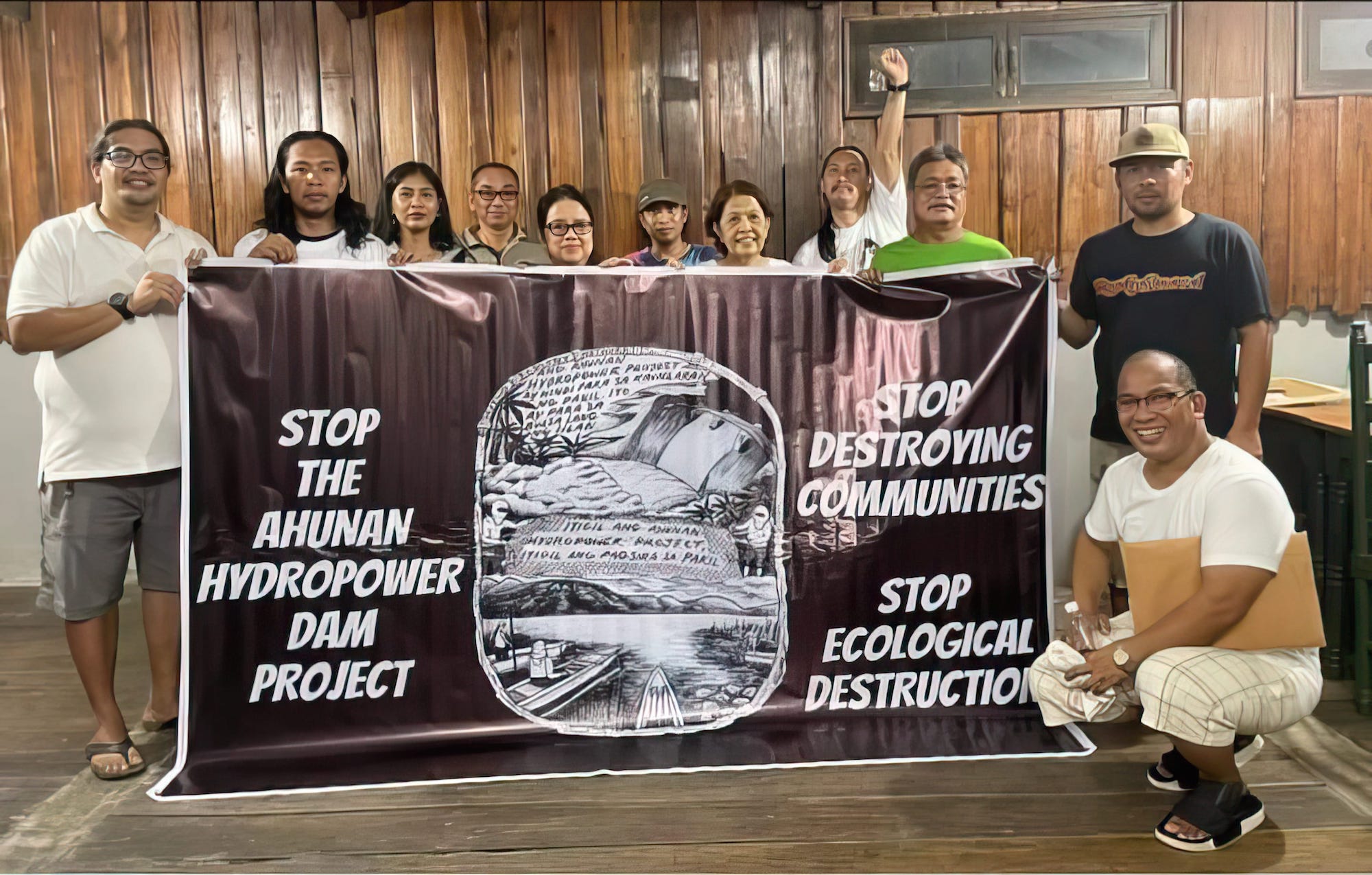Editor’s note: Activists and environmentalists in the Philippines take extreme risks by speaking out to protect land and water. The Philippines has consistently been ranked as the most dangerous country in the world for environmental defenders. This story includes reference to 68-year-old environmental defender Daisy Macapanpan, who was arrested on what appear to be trumped-up charges for resisting the Ahunan pumped hydroelectric dam. This repression is merely the beginning.
Deep Green Resistance has collaborated with grassroots activists in the Philippines for many years. Some of our allies are involved in this fight, and are raising funds to print educational materials, hold events, and support community activism against the Ahunan hydro project by providing expertise, assisting in connections with lawyers, help getting international media coverage, and more. You can donate to these community organizers via PayPal to this email address. ![]() This story has not previously been reported in the international press.
This story has not previously been reported in the international press.
MANILA — Casino billionaire Enrique Razon, one of the richest men in the Philippines, is planning a $1.1 billion hydropower dam which threatens Laguna De Bay, the largest lake in the nation and one of the largest in Southeast Asia, as well as the community of Pakil and rainforests on the flanks of the Sierra Madre mountains on the lake’s east bank.
Prime Infrastructure Capital corporation’s Ahunan Pumped-Storage Hydropower Project would destroy nearly 300 hectares of rainforest, leach toxic chemicals into Laguna De Bay, and could jeopardize the water supply for more than 20,000 residents of the area.
Local residents fear that the project could worsen typhoon flooding and lead to landslides, will destroy natural pools that are used in religious practices, and that the region’s frequent earthquakes could damage the dam and reservoir — which is planned to be built on Mt. Inumpong which rises above their community and that is riven by three major fault lines — leading to catastrophic failure.
Despite widespread community opposition, the project is set to break ground in 2023. Community organizers allege that illegal drilling is already taking place and that the Philippe army is guarding the site.
On June 11th, 68-year-old environmental defender Daisy Macapanpan, one of the leaders of the community opposition, was arrested in her home for “rebellion” after delivering a speech against the project. allegedly by 40 police officers with no warrant. She was released on August 10th on bail. Illegal detentions and arrests of environmentalists are common in the Philippines, which has also been ranked as the deadliest country for environmental defenders.
On August 8th, following extensive pressure from the communities and allegations of illegal conduct, the Municipal Councils and Chieftains of four directly impacted communities revoked a previous “no objection” resolution in favor of the project that had been in place since September 2021.
On August 23rd, the Department of Energy and Natural Resources Environmental Management Bureau and the community of Pakil dispatched representatives to investigate allegations on ongoing illegal construction.

Community organizers gathered in Pakil in August 2022 to resist the Ahunan hydroelectric dam project.
Pumped-storage hydropower is unlike regular hydropower dams, which block a river’s flow to produce electricity. Instead, pumped hydro storage (PHS) is an energy storage method. It depends on finding (or engineering) a site where two sizable reservoirs or natural water bodies at significantly different elevations can be connected by pipes. To store energy, operators pump water from the lower to the upper reservoir, and to use the stored energy, let it run back down through electrical power generation turbines.
According to the book Bright Green Lies: How the Environmental Movement Lost Its Way and What we Can Do About It, pumped-storage hydropower dams kill fish, distribute invasive species, destroy riparian vegetation and harm wetlands, decrease water quality, block aquatic migration, and contribute significantly to greenhouse gas emissions. The book also states that “these facilities lead to more fossil fuels being burnt” because of inefficiencies in the process.
The Ahunan Pumped-Storage Hydropower Project would produce 1,400 MW of electricity at full flow, none of which would go to the local community. Prime Infrastructure Capital corporation and the Philippines Department of Energy call the project “clean energy.”
The fish who live in Laguna De Bay are an important source of food for the 8.4 million people living in the surrounding communities. A petition to halt the project has been signed by more than 6,000 of the 15,000 voting-age residents closest to the proposed project.
The World Commission on Dams estimates that at least 40 million to 80 million people have been displaced by dams.
Featured image by Ramon FVelasquez. This file is licensed under the Creative Commons Attribution-Share Alike 3.0 Unported license.


Trackbacks/Pingbacks